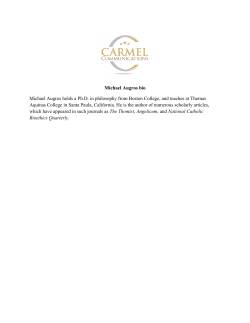
Physical Chemistry
The simplest state of matter is a gas, a form of matter that fills any container it occupies Lets picture a gas as a collection of molecules (or atoms) in continuous random motion, with average speeds that increase as the temperature is raised. What is the main difference between gases and liquids? Answer: The molecules of a gas are widely separated from one another and unaffected by intermolecular forces Physical Chemistry , 8th ed. By P. Atkins & J. Paula What physical association can we make with the temperature 𝑇? Temperature, 𝑇, is a property that indicates the direction of the flow of energy through a thermally conducting, rigid wall. If energy flows from A to B when they are in contact, then we say that A has a higher temperature than B No net transfer of energy as heat Physical Chemistry , 8th ed. By P. Atkins & J. Paula Thermal equilibrium Zeroth Law of thermodynamics If A is in thermal equilibrium with B, and B is in thermal equilibrium with C, then C is also in thermal equilibrium with A The Zeroth Law justifies the use of a thermometer Physical Chemistry , 8th ed. By P. Atkins & J. Paula Each substance is described by an equation of state Equation of state is a formula that interrelates the variables that describe the substance. Avogadro’s principle is commonly expressed in the form “equal volumes of gases at the same temperature and pressure contain the same numbers of molecules” Boyle’s Law: 𝑃𝑉 = Constant, at fixed n and T Physical Chemistry , 8th ed. By P. Atkins & J. Paula Charles’s Law: V = Constant X T, at fixed n and P P = Constant X T, at fixed n and V Physical Chemistry , 8th ed. By P. Atkins & J. Paula
© Copyright 2025










